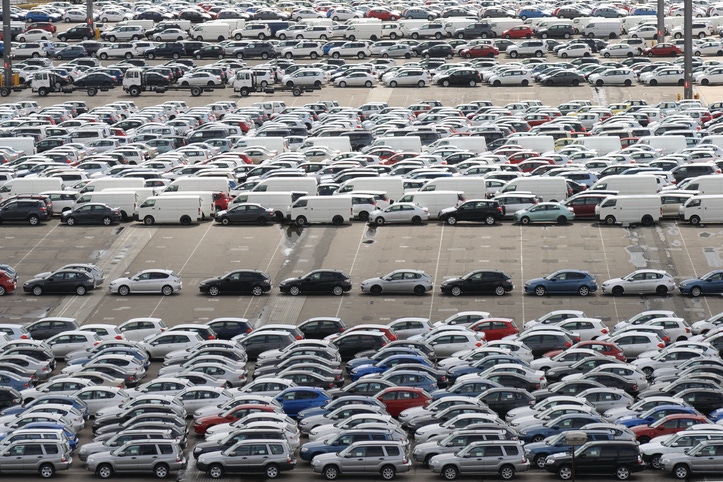Here’s why auto import tariffs are a potential pitfall for U.S. beef exports
Potential trade disputes continue to loom over the beef market. Here’s another one to keep on your radar.
March 6, 2019

By Dan Halstrom
2018 was a year in which exports of several U.S. agricultural products were pressured by retaliatory actions imposed by trading partners. While U.S. beef was among these products, retaliation was limited to two markets (China and Canada) and exports soared to new heights, exceeding $8 billion for the first time.
But potential trade disputes are still looming, and a major concern for the U.S. beef industry is the U.S. Department of Commerce’s investigation of whether imported automobiles and imported auto parts pose a threat to U.S. national security.
Commerce Secretary Wilbur Ross submitted the findings of this investigation to the White House on Feb. 17, but no details have been released. We do not know if the report recommends any additional tariffs on imported automobiles or parts, nor do we know if the Trump administration would follow such a recommendation.
But one thing is abundantly clear – the countries that export automobiles to the United States have a very strong appetite for U.S. beef. The leading suppliers, which account for nearly 99% of the imported autos entering the U.S., are as follows:

Source: 2017 U.S. Department of Commerce data and 2018 USDA data | Beef export value is a USMEF estimate based on January-November results
With the exception of Turkey, all of these trading partners are significant destinations for U.S. beef. In fact, of the estimated $8.3 billion in 2018 U.S. beef exports, nearly $6 billion (more than 70%) was shipped to the top five automobile suppliers on this list.
Beyond the top five, China was a $60 million market in 2018 but is the world’s fastest growing beef market and holds enormous potential for U.S. beef. South Africa is the sixth-largest market for U.S. beef variety meat and second-largest for beef livers.
This is not to suggest that every country facing higher tariffs on automobiles or auto parts exported to the U.S. would automatically target U.S. beef for retaliation, but the data underscores the potential impact on the U.S. beef industry. Language was included in the U.S.-Mexico-Canada Agreement (USMCA) that protects Canada and Mexico from potential auto tariffs, but the USMCA has not yet been ratified by any of the three countries.
There is no such language included in the updated Korea-U.S. Free Trade Agreement. Although the Office of the U.S. Trade Representative has published negotiating objectives for trade agreement talks with Japan and the European Union, formal negotiations have yet to begin.
Currently, fresh/frozen U.S. beef only faces retaliatory duties in China, which increased the import duty on U.S. beef from 12% to 37% last July in response to U.S. Section 301 tariffs on a wide range of products. So the tariff burden on U.S. beef entering China is three times higher than most competitors and faces an even larger gap compared to the two beef suppliers that have free trade agreements with China: New Zealand, which has duty-free access, and Australia, which currently faces a rate of 6% and will be duty-free by 2024.
U.S. beef was already the highest-priced in the market due to China’s import requirements, and the retaliatory duties added further costs. These duties also create uncertainty for buyers as no one knows when these tariffs might be lifted, making it difficult to plan menus and retail features.
Canada currently imposes a 10% retaliatory duty on imports of some prepared beef products from the United States in response to Section 232 tariffs on steel and aluminum imports. This tariff was also imposed in July 2018 and caused an 8% decrease in Canada’s imports of these processed U.S. beef products. This contrasts with an 8% increase seen in the first half of last year, and the corresponding July-November losses are estimated at $11.5 million.
Should retaliatory duties spread to other trading partners, the potential consequences are severe. In Japan, U.S. beef already faces the highest tariff rate (38.5%) of any major market. Through the Comprehensive Agreement for Trans-Pacific Partnership (CPTPP), the rate for our main competitors’ beef is 27.5%. It will drop to 26.6% on April 1 and decline to 9% by 2033.
In South Korea, the fastest-growing destination for U.S. beef, the United States currently enjoys a tariff rate advantage over our competitors (e.g., 18.7% vs. 24% for Australia) but this could easily be erased by a retaliatory tariff. All U.S. beef currently enters Mexico at zero duty, but the experience with U.S. pork, most of which currently faces a 20% retaliatory duty, has shown us how quickly a retaliatory action by Mexico can impact industry profitability and invite a heightened level of competition.
In Europe, U.S. trade officials are working on a plan to restore the viability of the EU’s duty-free quota for high-quality beef, as agreed in the U.S.-EU Memorandum of Understanding on the WTO hormone case. This is an ongoing and challenging negotiation that certainly needs no further complications.
For now we can only wait to see the details of the Department of Commerce report. But its findings could potentially slow the tremendous momentum U.S. beef has established in the international marketplace.
Halstrom is U.S. Meat Export Federation president and CEO.
You May Also Like


.png?width=300&auto=webp&quality=80&disable=upscale)
